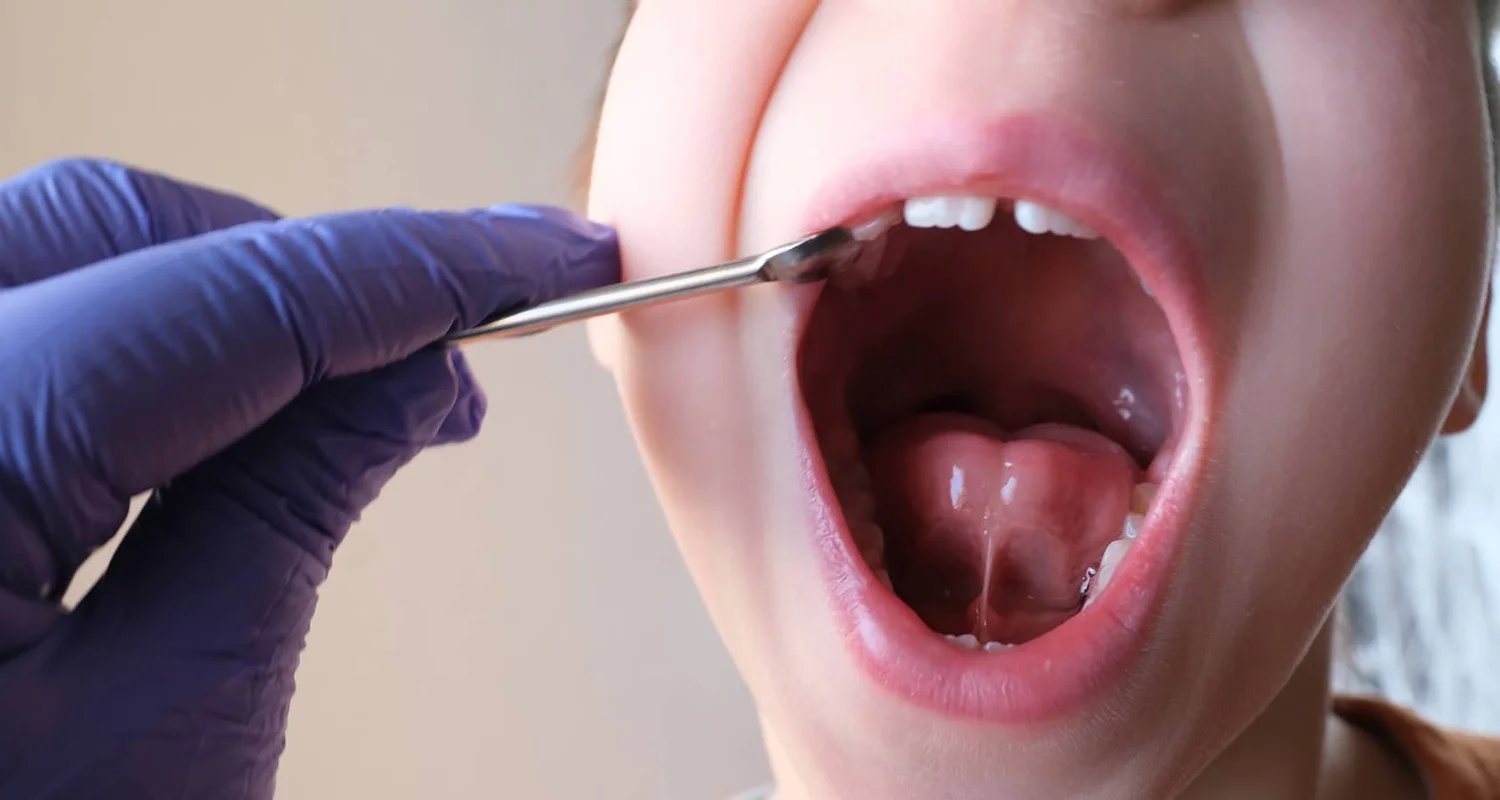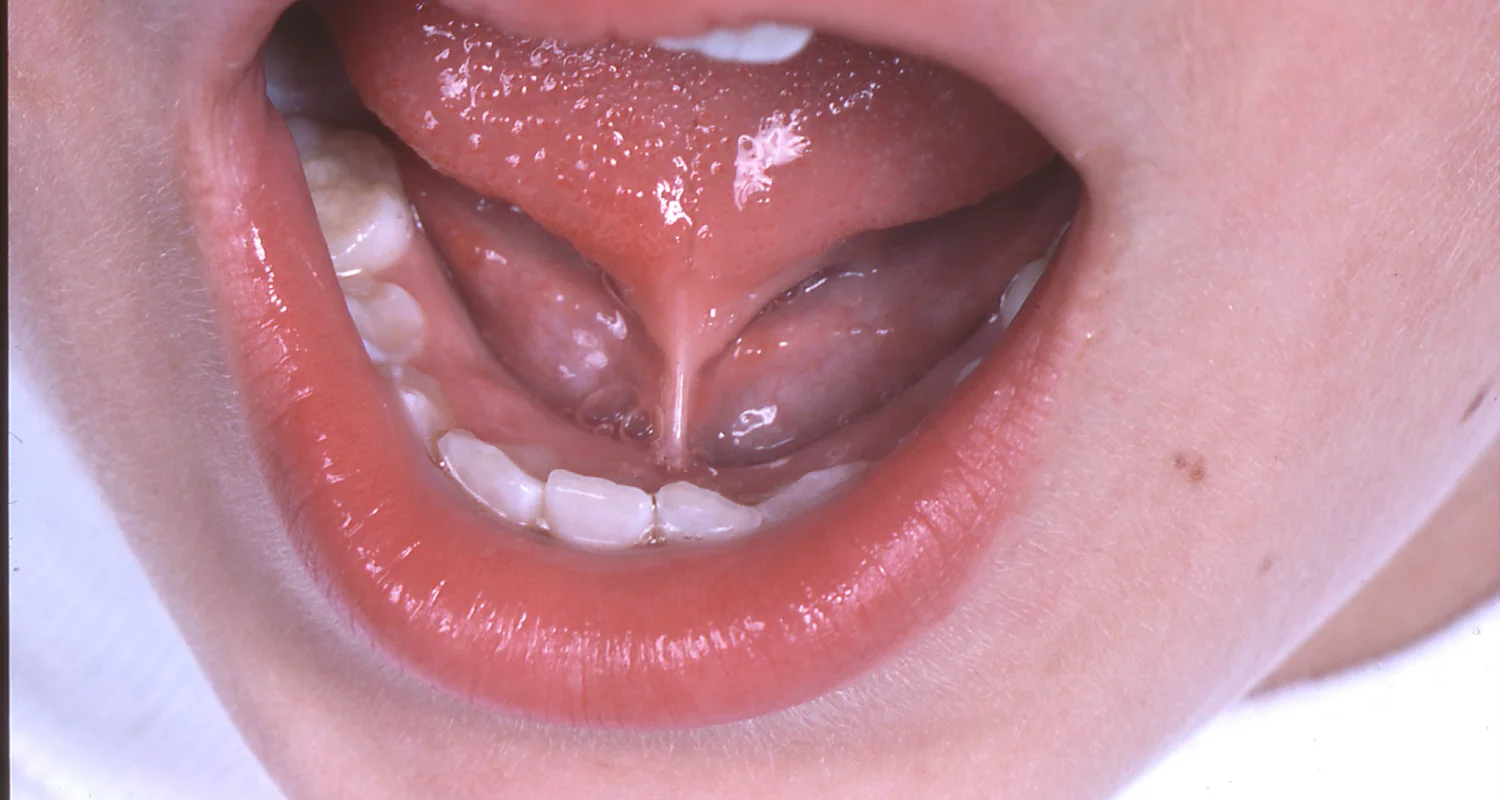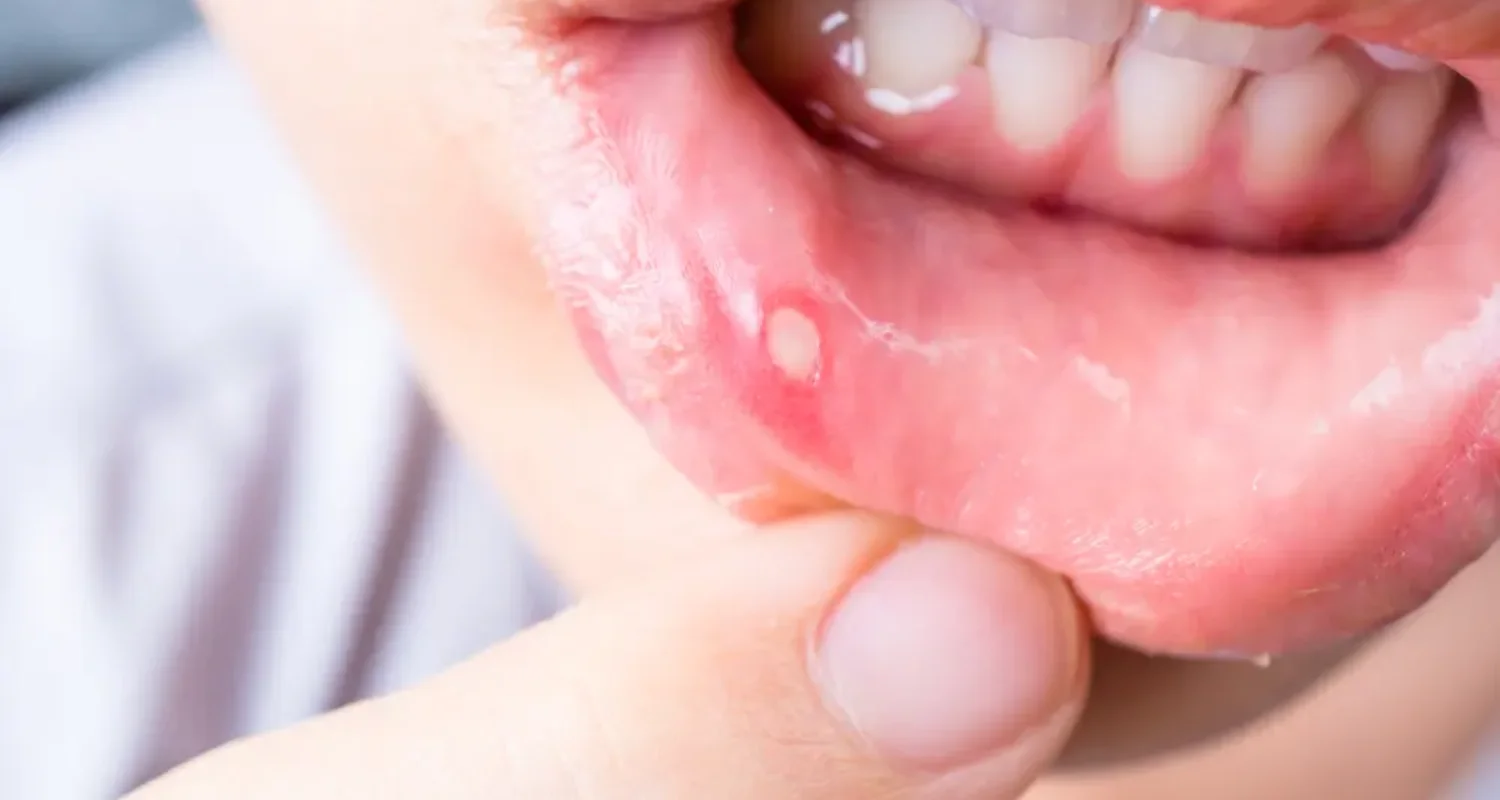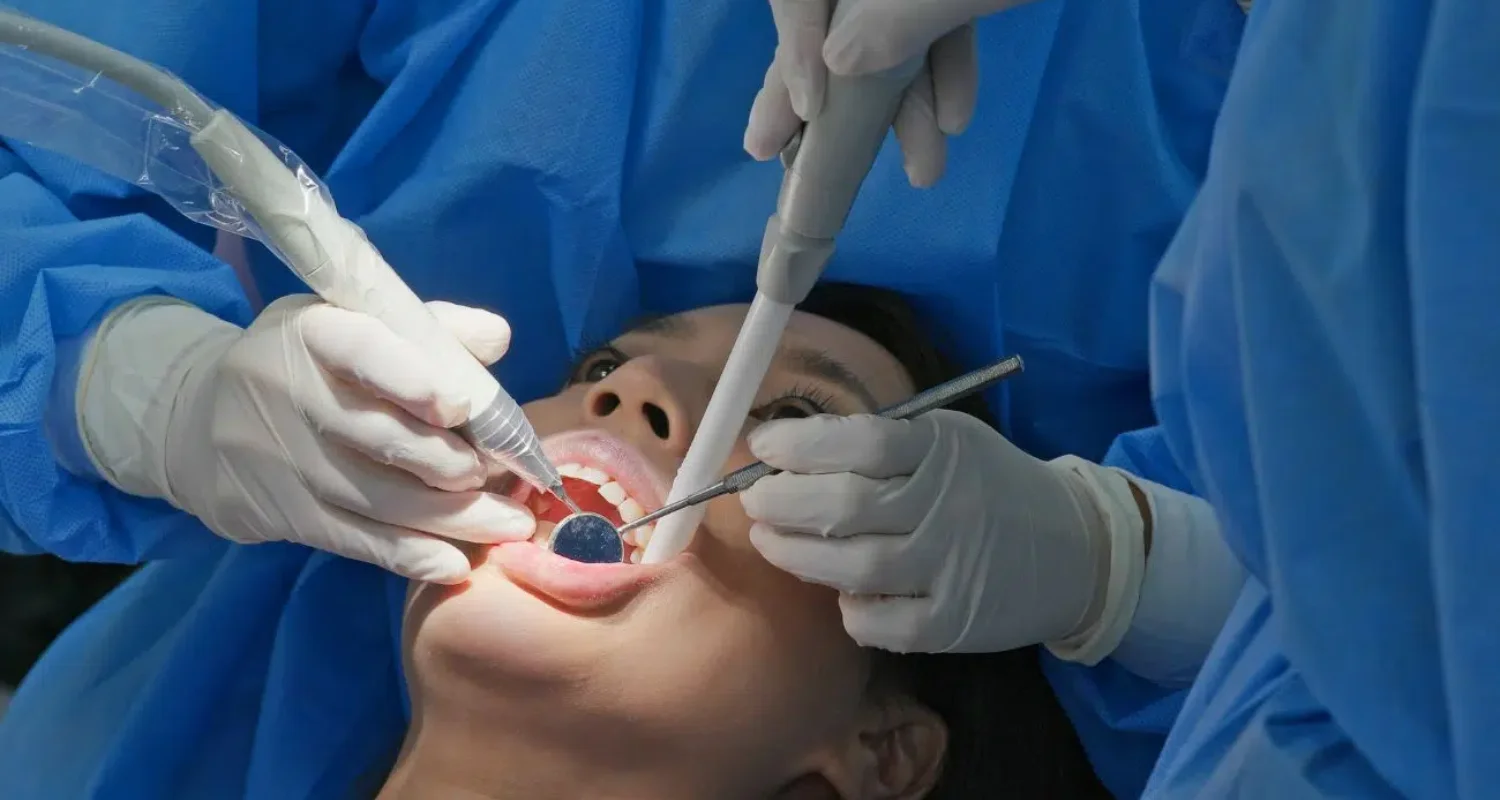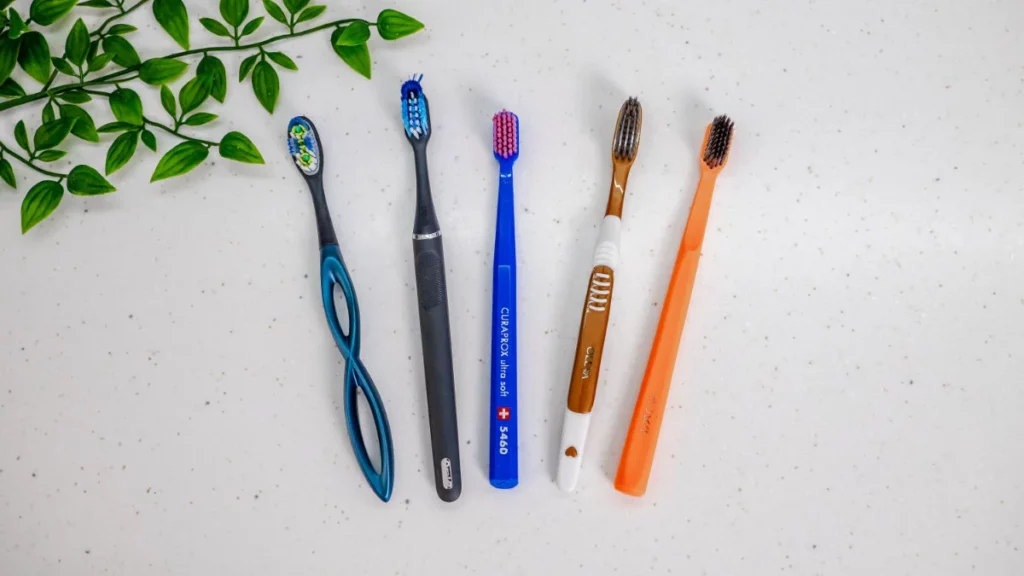Last Updated on: 19th September 2025, 12:35 pm
A sore lingual frenulum is commonly caused by physical trauma, infections, anatomical issues like a short frenulum (ankyloglossia), poor oral hygiene, or irritation from dental appliances. Treatment includes home remedies, professional dental care, and lifestyle changes.
A sore lingual frenulum can become a frustrating and painful problem, affecting everyday activities such as eating, drinking, and even speaking. Whether caused by injury, infection, or other factors, discomfort in this area can significantly disrupt daily routines. Recognizing the symptoms and understanding the underlying causes is essential for effective treatment and relief.
The lingual frenulum is a small, thin strip of tissue located under the tongue, connecting it to the floor of the mouth. Despite its small size, this structure plays a vital role in facilitating tongue movement for essential functions such as speaking, eating, and swallowing. Its flexibility and health are key to maintaining proper oral function and good comfort.
This article explores the five main causes of a sore lingual frenulum and provides practical solutions, ranging from home remedies to professional treatments. It also offers practical tips for prevention, which will help you maintain a healthy, pain-free mouth and avoid future discomfort.
What is the frenulum?
The lingual frenulum is a mucosal tissue located under the tongue, helping to anchor the tongue. It allows us to perform functions such as speaking, chewing, and swallowing. If you look in a mirror and lift your tongue you may be able to see it. The main objective of the frenulums located in the mouth is to stabilize and provide support to the lips and tongue.
What Are the Types of Oral Frenula?
Lingual frenulum
This is the thin band of tissue that connects the underside of the tongue to the floor of the mouth. It is crucial for proper tongue movement, facilitating functions such as speaking, chewing, and swallowing.
Labial frenulum
This frenulum connects the lips to the gums, both in the upper and lower jaw. Its function is to stabilize the lips and keep them in their natural position.
Buccal frenulum
It connects the cheeks to the gums, playing a role in the mobility of the oral tissues and in the even distribution of pressure in the oral cavity.
What Causes a Sore Lingual Frenulum?
Physical trauma or irritation
Pain in the lingual frenulum can be caused by chewing injuries, sharp foods, or excessive tongue movements. These activities can lead to inflammation or small fissures in the frenulum, causing discomfort.
Short lingual frenulum (ankyloglossia)
A short or restricted lingual frenulum limits tongue movements, which can cause discomfort and difficulty speaking, eating, or maintaining good oral hygiene. The Coryllos scale classifies ankyloglossia into four types according to its severity:
- Type I: Thin, elastic frenulum that connects the tip of the tongue to the ridge behind the lower teeth.
- Type II: Thin, elastic frenulum that connects the tongue 2 to 4 millimeters from the tip to the floor of the mouth, near the ridge behind the lower teeth.
- Type III: Thick, rigid frenulum that connects the tongue from the center to the floor of the mouth.
- Type IV: Posterior or non-visible frenulum, but when touching the area you can feel tight fibers anchoring the tongue, with or without a shiny area on the floor of the mouth.
Infections or ulcers
Viral infections such as candidiasis (thrush) or bacterial infections can irritate the lingual frenulum, causing redness, inflammation, and pain.
Poor oral hygiene
In older children and adults, a restricted lingual frenulum can make it difficult to properly clean the teeth and gums, encouraging the buildup of debris. This can lead to the formation of cavities, inflammation of the gums (gingivitis), and irritation in the frenulum area.
Dental appliances
Orthodontic appliances such as braces, retainers, or dentures can cause friction or pressure on the frenulum, which in the long term can lead to irritation and discomfort.
Identifying the specific cause of a sore lingual frenulum is essential to properly address the problem and prevent future complications.
How Can You Treat a Sore Lingual Frenulum Naturally?
Natural remedies that help relieve pain and irritation of the lingual frenulum include the following:
1. Saltwater rinses: Mixing a teaspoon of salt in warm water and gently rinsing several times a day helps to clean, reduce inflammation and speed up the healing process.
2. Cold compress: Applying a cold compress or wrapping ice in a clean cloth and placing it on the outside of the mouth or even on the affected area for a few minutes can offer quick and effective relief for pain and help reduce inflammation. Make sure that you do not leave the compress in contact with the skin or mucous membrane for too long because it can cause irritation.
3. Applying honey: Honey has natural antibacterial and anti-inflammatory properties. Applying a small amount of honey to the affected or sore area helps reduce irritation and pain.
4. Rinse with coconut oil: Coconut oil is effective in reducing bacteria and relieving irritation in the lingual frenulum, thanks to its antimicrobial and soothing properties. Rinse your mouth with a tablespoon of coconut oil. Gently swish for 10 minutes, making sure to pass the oil over the affected area. Then, spit out the oil and rinse with warm water.
5. Rinse with chamomile tea: Chamomile infusions help relieve symptoms of inflammation and irritation thanks to their anti-inflammatory properties. It is recommended to prepare the chamomile tea, let it cool, and use it as a rinse.
When Should You See a Dentist for a Sore Frenulum?
- Persistent soreness or swelling: A lingual frenulum that remains sore or swollen for weeks may indicate an underlying issue that needs evaluation.
- Signs of infection: Redness, warmth, discharge, or visible inflammation in the frenulum area may suggest an infection.
- Presence of ulcers: Open sores or lesions on or near the frenulum should not be ignored, as they can signify irritation or an underlying condition.
- Difficulty swallowing or speaking: Trouble with speech articulation or swallowing could point to a restricted or problematic frenulum.
- Snoring or mouth breathing: Frequent snoring or habitual mouth breathing may be related to anatomical or developmental issues involving the frenulum.
- Restricted tongue movement: Difficulty sticking out the tongue or performing normal tongue movements can be a sign of a short or tight frenulum (ankyloglossia).
- Developmental abnormalities in the mouth: Unusual growth patterns or structural concerns affecting oral functions may require immediate evaluation.
If you experience any of these symptoms, consult a dentist or healthcare provider promptly to prevent complications and ensure appropriate treatment.
What Are the Professional Treatments for a Sore Frenulum?
Cleaning and medication
Professional cleaning to remove irritants or plaque. Prescription antibiotics or medicated mouthwashes for infection.
Frenectomy
This is a surgical procedure in infants where the frenulum is released with a sterile cloth or cautery. It is an easy procedure with minimal discomfort, but could have some disadvantages.
Frenuloplasty
This involves releasing the frenulum in adult patients, and then suturing it with absorbable sutures so that it will go away on its own while the wound heals. It is usually done under general anesthesia.
Custom dental adjustments
Making specific modifications to dental appliances such as dentures or other devices, with the goal of eliminating pressure points, reducing irritation, and ensuring a comfortable and secure fit for oral health.
Maintaining oral hygiene is essential to prevent discomfort and problems such as a sore lingual frenulum. Brushing your teeth twice a day with a great technique and incorporating floss into your routine ensures a thorough clean, reducing the buildup of bacteria and food debris that can lead to infection or irritation. Opting for soft-bristled toothbrushes and non-abrasive toothpaste further protects delicate oral tissues, including the frenulum.
In addition to good hygiene, moderating habits such as excessive gum chewing or fiddling with braces can help minimize unnecessary strain on the frenulum. Simple lifestyle changes can make a significant difference in preventing irritation and maintaining a healthy oral environment.
Regular dental checkups are crucial for early detection and treatment of potential problems. By addressing concerns promptly and maintaining consistent care, you can protect your oral health, ensuring comfort and functionality while safeguarding your overall well-being.
Frequently Asked Questions
Why is my tongue's frenulum sore?
A sore lingual frenulum can result from physical trauma, such as chewing injuries or sharp foods, infections like thrush, or irritation caused by dental appliances. A short or tight frenulum (ankyloglossia) can also restrict movement, leading to discomfort. Poor oral hygiene may further exacerbate irritation by allowing bacteria and debris to accumulate.
How can I treat a sore lingual frenulum?
To alleviate discomfort, try rinsing with warm salt water to reduce inflammation, applying a cold compress to numb the pain, or using natural remedies such as honey or coconut oil for their antibacterial and soothing properties. If the soreness persists or worsens, consult a dentist for professional evaluation and treatment.
When should I see a dentist for a sore frenulum?
Seek professional attention if the soreness lasts for weeks, you notice signs of infection (e.g., redness, swelling, or discharge), or you experience difficulty swallowing, speaking, or sticking out your tongue. Snoring, mouth breathing, or developmental abnormalities in the mouth may also warrant a dental visit.
Can a sore lingual frenulum be a sign of a more serious problem?
Yes, persistent soreness or restricted tongue movement can indicate underlying conditions like ankyloglossia, infections, or structural abnormalities. Early diagnosis and treatment are important to prevent complications such as speech or swallowing difficulties.
How can I prevent irritation of the lingual frenulum?
Maintaining good oral hygiene is crucial. Brush your teeth twice daily using a soft-bristled toothbrush and floss regularly to reduce bacterial buildup. Avoid excessive gum chewing or playing with dental appliances, as these can strain the frenulum. Regular dental checkups help catch and address potential issues early.
Why does the skin under my tongue hurt?
The skin under your tongue, called the lingual frenulum, can hurt due to injury, poor hygiene, or irritation from dental devices. Simple remedies like saltwater rinses and coconut oil can help, but see a dentist if it doesn’t improve.
Share
References
1. Cht, A. B. P. D. (2023, 10 julio). Function of the Lingual Frenulum and Pain Causes. Verywell Health. https://www.verywellhealth.com/lingual-frenulum-7501663
2. Frenillo lingual corto (anquiloglosia) – Diagnóstico y tratamiento – Mayo Clinic. (s. f.). https://www.mayoclinic.org/es/diseases-conditions/tongue-tie/diagnosis-treatment/drc-20378456
3. Frenillo lingual corto (anquiloglosia) – Síntomas y causas – Mayo Clinic. (s. f.). https://www.mayoclinic.org/es/diseases-conditions/tongue-tie/symptoms-causes/syc-20378452
4. Mills, N., Pransky, S. M., Geddes, D. T., & Mirjalili, S. A. (2019). What is a tongue tie? Defining the anatomy of the in‐situ lingual frenulum. Clinical Anatomy, 32(6), 749-761. https://doi.org/10.1002/ca.23343
5. Professional, C. C. M. (2024, 10 septiembre). Frenum (Frenulum in Mouth). Cleveland Clinic. https://my.clevelandclinic.org/health/body/frenum-mouth-frenulum
6. Seladi-Schulman, J., PhD. (2019, 4 septiembre). How to Treat and Prevent Conditions of the Lingual Frenulum. Healthline. https://www.healthline.com/health/lingual-frenulum#soreness
-
Dr. Yeidy Carolina Mesa [Medical Reviewer]
DDS Yeidy Carolina Mesa Passionate Dentist | Advocate for Accessible Oral Health Education Graduating from Universidad CES in 2022, I am a dedicated general dentist with a lifelong passion for helping others and making a meaningful impact in the world. My journey into dentistry began at the age of 7, inspired by my own experience with braces and overcoming a fear of the dentist. This personal journey shaped my mission to help patients conquer their own dental anxieties and embrace a healthier,...
View all posts



